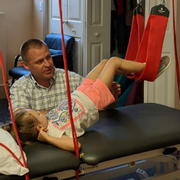A Guide to Overpronation, Underpronation, & Neutral Pronation

While walking or running, your foot moves in a motion that medical professionals call pronation. Although it’s a natural movement, it can make physical therapy necessary if you’re vulnerable to underpronation and overpronation. For those who regularly walk or run for exercise, knowing more details can help you deal with these issues.
What Is Underpronation?
Also called supination, underpronation describes the way the foot angles too far outward when you step, forcing excess stress on the outer edge and small toes. It’s most commonly a problem for walkers and runners with high arches. In many cases, it can lead to complications like Achilles tendonitis, plantar fasciitis, iliotibial (IT) band syndrome, ankle overuse, and other problems that would require physical therapy to resolve.
What Is Overpronation?
When the ankle moves too far inward as you step, this is overpronation. Your weight then shifts primarily to your big and second toes as you continue walking. Walkers and runners with flat feet are most prone to it. Without correction or help from a physical therapist, it can result in shin splints, tendon dysfunction, and general knee pain.
What Is Neutral Pronation?
 Each step should start with your heel hitting the ground and your arch flattening itself to prevent shock. After that, your body should distribute the weight fluidly from the outer edge of your foot to your big and second toes, then back outward as you lift. Your arch and toes will then stabilize your foot, and your heel should be directly behind you, not to either side. This whole process is called neutral or normal pronation.
Each step should start with your heel hitting the ground and your arch flattening itself to prevent shock. After that, your body should distribute the weight fluidly from the outer edge of your foot to your big and second toes, then back outward as you lift. Your arch and toes will then stabilize your foot, and your heel should be directly behind you, not to either side. This whole process is called neutral or normal pronation.
What Can It Be Treated?
First, you must determine your gait. If the heels on your shoes are tilted and worn more toward the inner side, then you’re an overpronator. The opposite is true of an underpronator; the tilt and wear in the heel will be on the outer side. If you’re not sure, ask a physical therapist for a 3D gait analysis. This is an effective and noninvasive technique that involves attaching reflective markers to your legs so that infrared cameras can evaluate your movements.
From there, you can decide how to purchase the best shoes for walking and running. You can prevent underpronation with pliable and generously cushioned shoes, while overpronation requires orthotic shoes that control the motion of your foot.
If you experience pain or injury in your foot, ankle, or leg despite taking these precautions, you can learn healing and pain management exercises through physical therapy.
If you are in need of a treatment program for overpronation or underpronation, contact Jefferson Rehabilitation & Wellness in Ashtabula County, OH. They are experts in sports injuries and alternative health, and the friendly staff is always ready to address chronic pain and recovery from surgery or workouts. That way, you can focus on enjoying a healthy lifestyle. To make an appointment, call (440) 576-0043. Visit them online for more information about their services.
About the Business
Have a question? Ask the experts!
Send your question

